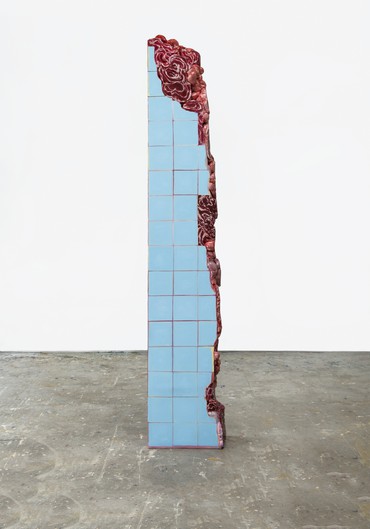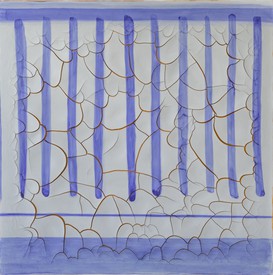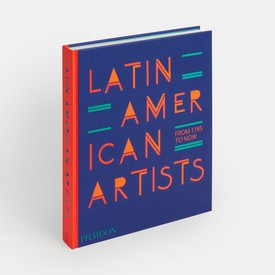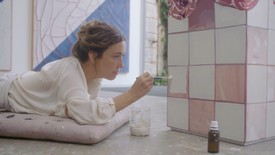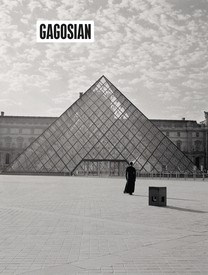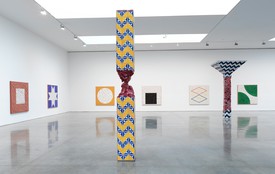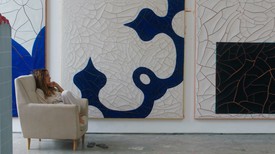
Lilia Moritz Schwarcz is a Full Professor in Anthropology at the University of São Paulo and a Global Scholar at Princeton University. She was a Guggenheim Foundation fellow in 2006–07 and a visiting professor at Oxford, Leiden, Brown, and Columbia universities.
In his book The Savage Mind, French anthropologist and ethnologist Claude Lévi-Strauss describes the experience of the anthropologist Eleanor Smith Bowen, who juxtaposed “her vain philosophy” to that of the “native” from whom she was learning a new language. During the elementary stage of her apprenticeship, her informants insisted that she memorize the names of botanical specimens that she was unable to recognize. When Bowen questioned this requirement, she was rebuked: “How can you say you speak our language when you cannot even recognize 150 species of plants?” Reacting to such an episode might have given rise to many other reactions. The first would have been to admit the exoticism embedded in the discourse of the “other,” relegating the episode to the aegis of primitivism as expressed in the altercation: “they” do, in fact, exist and think differently from “us.” Another possibility could have been to take note of what this altercation revealed: the idea that cultures function like languages, representing entryways to worlds unknown, and creating misunderstandings along the way. For “us,” speaking a language means knowing how to articulate subjects, verbs, and predicates, and knowing how to employ adjectives selectively and coherently. Using the lexicon means knowing how to inflect and multiply. As for “them,” the measure of articulacy is apparently not utilitarian but based on sensory experience. In order to name one must know, and in order to know one must, in turn, be able to recognize.
Yet what might be the common ground between this situation and the world that opens up before us in the canvases of Adriana Varejão? In attempting to answer the question I will hazard the exploration of another language—the azulejo tile and the Portuguese verb azulejar. Native to Arab peoples but also present in India and China, the azulejo conquered the world from the holds of ships, on the backs of camels, in airplane holds, by virtue of its extreme portability. Given its shared heritage in both West and East, the material evidence of the tile itself—described in the September 2016 issue of the Gagosian Journal—recalls dialogue, exchange, and theft.
The art of tile-making is said to have been introduced to Portugal, through Spain, by the Moroccans, who, in turn, had learned it from the Persians. The path traveled was a tortuous, even paradoxical one, despite the predictable symmetry of the product. For this reason, whereas the term azulejo (from the Arabic al zulaich, al zulaikha, al zula’ij) lost its initial identity, it maintained its meaning: “small polished stone.” Tiles were used to cover the walls of spaces both sacred and mundane; they were objects of royal admiration from France to China, but they also claimed preferred space in train stations, bars, and butcher shops. The origin of the tile is hard to pinpoint and its uses have been varied, whether geographical, temporal, religious, erotic, quotidian, or merely aesthetic. It is hybrid by birth and definition.
We know that all worldly things may be traded: goods, symbols, objects—even women. And as part of the exchange of azulejos came values, projections, utopias, and simulacra. Soon associated with trompe l’oeil, the technique very often revealed its performative features to be used “instead of”: instead of more noble materials; instead of landscape; instead of wealth. But it also produced wealth, given that it made viable a technical virtuosity achieved by the Arabs, the Chinese, the Dutch, and later the Spaniards, the Portuguese, and, in their path, the Brazilians.
It is said that when the Portuguese took Ceuta, on the African coast of the Strait of Gibraltar, in 1415, they also stole the technique of azulejo tiling. Yet until the sixteenth century they preferred to import the product rather than recreate it, since the markets of Spain and Holland were steady suppliers. At the end of the sixteenth century, azulejos became a permanent part of Portuguese reality, used to pave castles, churches, and monasteries. Altars, floors, and ceilings were now invaded by tiled compositions bearing flowers, birds, and foliage in a process that cannibalized elements from other cultures, promptly resignifying them in the pious religious terms of Portuguese culture in that age.
Not by chance, among the many dichotomies that Sérgio Buarque de Holanda articulated in his book Raízes do Brasil (Roots of Brazil, 1936), he included that of the sower and the tiler. The sower represented the Portuguese colonizer who, upon his arrival in Brazil, expended no great effort on the work of colonization, casting his seeds to the wind, paying little heed to where they might land. The absence of any intention of laying roots, of endowing the land with infrastructure or development, explains the anarchy of Brazil’s unplanned cities. The Spaniard was the tiler who established himself in South America seeking “the exasperated love of uniformity and symmetry.” His cities were planned and known for their straight, rational lines.
It would be more profitable to emphasize metaphor than division: to sow is to make way for; to tile is to link, to lay roots, to provide uniformity and symmetry. Let us consider Varejão’s azulejos and her supposedly uniform lines in relation to the geometry of her saunas’ enclosures—supposedly uniform because of the cut that reduces the canvas, contradicting the object’s continuity. Interiority devastates exteriority. Perhaps the azulejo really is a tile that fills a void even as it establishes new forms of colonization, if not civilizing then at least cultural.
Consider as a double of the azulejo he who tiles, paves, experiments, fills in, or dialogues. There is nothing like gathering these loose threads in order to ponder Varejão’s work. If there is any one element that runs through her artistic trajectory it is the omnipresence of the azulejos, which articulates relations without fixing them, simulating rather than denouncing, representing in lieu of presenting. To speak is to articulate assumptions and to establish is to signify associations. And we are not far from thinking that, in Varejão’s work, “azulejo” is citation; it is language. To tile with azulejos (azulejar) would then be to activate this dialectic between the local and the universal; between inside and outside; between copy and translation.
One may say that azulejos pave, tile, and fill in Varejão’s art. They pave a trajectory, and this paving binds a tissue of histories that unravels with each new phase, with each challenge. Like a bricoleuse, Varejão gathers fragments of histories and translates them into others. Like the watchmakers of old, she begins with what she finds and develops her project as she goes, in accordance with a model that is opposite to that of the engineer who, as Lévi-Strauss clearly shows us, first creates the project and then finds the objects with which to realize it. Varejão starts off with what she has: she distributes, reassembles, and creates based on narratives that she patiently collects, rereads, remakes. We know that every translator is a traitor, and her process resembles that of Chinese boxes. Opening one box within another, her work reveals a sea of histories.
Tiles were used to cover the walls of spaces both sacred and mundane; they were objects of royal admiration from France to China, but they also claimed preferred space in train stations, bars, and butcher shops.
Lilia Moritz Schwarcz
In the 1980s, Varejão’s azulejo tiling was most directly in dialogue with the Baroque, with an undefined form strongly supported by gesturality. Chinese pottery had already revealed itself as both appropriate and appropriatable material in its geometry as well as in its fragmentation and figuration. Known for their delicacy and crocodiling, Chinese Song ceramics emerged as part of her game of simulation and reality (Açougue Song, 2000). And what to say of the azulejos that line the walls of butcher’s shops? Clean in their exteriority, avoiding contamination and dirt, they are duly conflicted in their identity, where inside becomes outside and outside in. The living flesh emerges in the center of the canvas, and it is as human as the effect and result of the paint. Paint is compressed, squeezed, thrown by a gesture that frees and imprisons when it reveals its intention. There is butcher’s meat and dried beef, in the very Brazilian tradition of conserving in order to have something to eat, even if it is meat dried by time. Here common flesh is the transit of viscera: on the one hand, flesh that hides beneath the fake effect of perfect canvases that reveal equally perfect situations; on the other, the foregrounded meat that is sold and exhibited.
That Ruina de Charques (Jerked Beef Ruins) should appear in Varejão’s work should come as no surprise. The clean contains the dirty and purity contains peril, as demonstrated by the anthropologist Mary Douglas when she dealt with our most deeply rooted cosmologies. Ours is a civilization of cleanliness that aspires to hygiene and homogeneity; we are in denial of defilement. At least apparently, nothing could be cleaner than Varejão’s ascetic Saunas. Clean in accordance with function and use, their purpose should be to help the body expel impurities and aspire to perfection. In them, we extirpate “evil” that we may become beatified and neutralized in a ritual that foresees separating the hybrid from the pure, the clean from the soiled.
Saunas are enclosures, laboratories for avoiding contamination. Yet there is nothing filthier than a sauna, which accumulates imperfections in its folds, debris in its junctions. The spectacle of filth, of imperfection—of the unsaid and, once again, the simulacrum—is outlined alongside the spectacle of emptiness: predictably, geometric tile and ritual cleanliness. Perhaps it is in Paredes com incisões à la Fontana (Wall with Incisions à la Fontana, 2002) that the full breadth of this spectacle is most clearly represented. Instead of the marbled tile of living flesh, here is the azulejo in its most “primary” version, betrayed only by the instrument that once again mutilates and exposes imperfection.
Varejão’s cartography moves between truths and simulations, cleanliness and dirt, history and rereading, blood red and sky blue, tile and tear, canvas and simulacrum. Like a kaleidoscope in which the material is always the same but produces new designs, her works appear to be constantly shuffled. The design of one canvas is always completed in another; each box opens to reveal a new one; each story results in the following one. The stories never end, for there is always a world that invents them and, after all, as Jorge Luis Borges wrote, everything has been written. Certainly there is no way to remake a lifetime of work wrought from such feeling, affection, criticism, reading, rereading, intention, and chance. The way out was, therefore, to follow a case-oriented methodology inspired by historian Carlo Ginzburg in his influential book The Cheese and the Worms—to pay attention to the vestiges and signs left by the works, all of them reflecting tension, dialogue, and ambivalence.
Artwork © Adriana Varejão; text excerpted from “Paved and Tiled by Adriana Varejão” by Lilia Moritz Schwarcz, in Adriana Varejão—entre carnes e mares (Rio de Janeiro: Cobogó, 2009)

